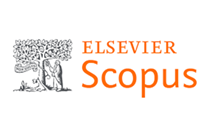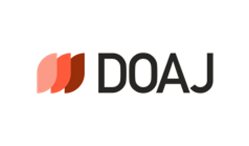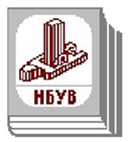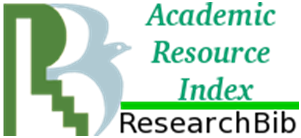ІННОВАЦІЇ В МОРСЬКИХ РЕСУРСАХ ІНДОНЕЗІЇ: ЦИФРОВА ТРАНСФОРМАЦІЯ ПОЛІТИКИ «БЛАКИТНОЇ» ЕКОНОМІКИ ДЛЯ ЕКОНОМІЧНОЇ СТАЛОСТІ
Ключові слова:
«блакитна» економіка, «блакитне» фінансування, морські ресурси, цифрова трансформація.Анотація
Індонезія має потенціал стати «світовою морською віссю», що, однак, потребує подальших дій, зокрема зміцнення її морського потенціалу. У дослідженні проаналізовано вплив секторів «блакитної» економіки, представлених такими показниками, як «обмінний курс рибалок» (NTN), «кількість іноземних туристів», «оборонний бюджет», «інвестиції в морський сектор» та «Індекс розвитку інформаційно-комунікаційних технологій» (ІКТ), на величину валового внутрішнього продукту (ВВП) Індонезії. Крім того, розкрито вплив Індексу розвитку ІКТ на «блакитну» економіку, зокрема через змінну валового внутрішнього продукту рибного господарства як проєкцію цифровізації у «блакитній» економіці. На основі використання вторинних даних щодо мор ського сектору в Індонезії застосовано регресійний аналіз із використанням двох моделей на даних часових рядів, які охоплюють період з 2012 по 2023 рр. Результати оцінювання моделі 1 показали, що змінні «обмінний курс рибалок», «кількість іноземних туристів» та «інвестиції» позитивно впливають на ВВП, але ці ефекти статистично незначущі. На противагу цьому, змінні «оборонний бюджет» та «Індекс розвитку ІКТ» мають позитивний і значущий вплив на ВВП. За результатами оцінювання моделі 2 виявлено, що вплив цифрової трансформації, яку представлено Індексом розвитку ІКТ, на ВВП рибного господарства є позитивним і значущим. Ці результати свідчать про те, що для посилення впливу секторів блакитної економіки на ВВП необхідна інклюзивна політика. З огляду на це рекомендовано застосувати стратегію цифрової трансформації інфраструктури секторів «блакитної» економіки на основі екосистеми Інтернету речей (IoT) та стратегію «блакитного» фінансування із використанням «блакитних» облігацій.
Класифікація за JEL: O22, Q22, G38.
Посилання
Afpriyanto, A., Putra, I. N., Jupriyanto, J., & Sari, P. (2023). Critical role of maritime infrastructure in Indonesian defense logistics management towards the world maritime axis. International Journal of Humanities Education and Social Sciences, 3(3), 1215–1224. https://doi.org/10.55227/IJHESS.V3I3.657
Alifa, N. N., & Zahidi, M. S. (2024). Pengembangan Ekonomi Biru Sebagai
Strategi Indonesia Menuju Ekonomi Maju [Blue economy development as Indonesia’s strategy towards advanced economy]. Jurnal Ilmu Sosial Dan Ilmu Politik, 38(1), 48–65.
Althalet, F., Fajar Rahayu, T. S., Hera, H., Akhirati, A. F., Pingki, P., Nura, N., & Andreana, A. G. (2021). Incorporating Blue Bonds as a funding alternative for a sustainable development project. International Journal of Research in Business and Social Science (2147–4478), 10(5), 129–134. https://doi.org/ 10.20525/IJRBS.V10I5.1310
Atesoglu, H. S., & Mueller, M. J. (1990). Defence spending and economic growth. Defence Economics, 2(1), 19–27. https://doi.org/10.1080/10430719008404675
Bakulina, A. A., Zemskov, V. V., & Sinyavskiy, N. G. (2021). Economics, lobbying, and geopolitics as factors shaping the uncertainties and risks of defense spending. Economics and Management, 27(3), 201–209.
Benzaken, D., Adam, J. P., Virdin, J., & Voyer, M. (2024). From concept to practice: Financing sustainable blue economy in small island developing states, lessons learnt from the Seychelles experience. Marine Policy, 163, 106072. https://doi.org/10.1016/J.MARPOL.2024.106072
Bosmans, P., & de Mariz, F. (2023). The blue bond market: A catalyst for ocean and water financing. Journal of Risk and Financial Management, 16(3), 184. https://doi.org/10.3390/JRFM16030184
Budiono, E., Mahyudin, I., & Bandung, A. R. (2015). Pengukuran Nilai Tukar Nelayan Di Kabupaten Tanah Laut Provinsi Kalimantan Selatan [Measurement of fishermen’s exchange rate in Tanah Laut Regency, South Kalimantan Province]. Fish Scientiae, 5(9), 26–36. https://doi.org/10.20527/fs.v5i9.1118
Cempaka, D., Murti, W., Kusumastuti, Z. R., Handoko, V. S., Bima, A., & Wijaya, M. (2022). Peningkatan Digitalisasi Pariwisata di Wilayah Desa Purwoharjo, Kulon Progo [Increasing tourism digitalization in Purwoharjo Village Area, Kulon Progo]. Jurnal Atma Inovasia, 2(1), 14–19. https://doi.org/ 10.24002/JAI.V2I1.5395
Central Bureau of Statistics. (n. d. – a). Indeks Pembangunan Teknologi Informasi dan Komunikasi [ICT Development Index]. [Dataset]. Retrieved November 4, 2024, from https://www.bps.go.id/id/publication/2024/09/30/b50f00b8615 fc8716c8e02d4/indeks-pembangunan-teknologi-informasi-dan-komunikasi- 2023.html
Central Bureau of Statistics. (n. d. – b). Nilai Tukar Nelayan [Fishermen’s Exchange Rate]. [Dataset]. Retrieved November 4, 2024, from https://www.bps.go.id/ id/statistics-table/2/MTcxMyMy/ntn--nilai-tukar-nelayan--menurut-subsektor-- 2018-100-.html
Çetin, G., Yıldırım, H. H., Koy, A., & Köksal, C. (2018). Defense expenditures and economic growth relationship: A panel data approach for NATO. In H. Dincer, Ü. Hacioglu, & S. Yüksel (Eds.), Global approaches in financial economics, banking and finance (pp. 131–149). Contribution to Economics. Springer. https://doi.org/10.1007/978-3-319-78494-6_6
Chugh, P. (2023). Leveraging blockchain technology in adopting digital tokenization of green bonds. In R. Sharma, A. Shishodia, & A. Gupta (Eds.), Fostering sustainable development in the age of technologies (pp. 213–224). Emerald Publishing Limited. https://doi.org/10.1108/978-1-83753-060-120231015
Devidze, N. (2022). Current state of green digital financing and the associated challenges. In F. Taghizadeh-Hesary & S. Hyun (Eds.), Green digital finance and sustainable development goals (pp. 29–50). Economics, law, and institutions in Asia Pacific. Springer. https://doi.org/10.1007/978-981- 19-2662-4_2
Dhingra, H., Deshmukh, A., & Mundafale, A. (2024). Financial technology for the sustainable development. IJFMR – International Journal for Multidisciplinary Research, 6(3), 1–11. https://doi.org/10.36948/IJFMR.2024.V06I03.20644
Doce, L. J. P., Catedrilla, J. M., Dela Vega, C. J. B., Limpin, L. L., Ambalong, K. A., & Trillo, J. I. T. (2024). Exploring the nexus between the blue economy and information technologies: A systematic literature review of information systems in Pacific fisheries and aquaculture. Journal of Engineering, Environment, and Agriculture Research, 3(1), 46–54. https://doi.org/10.34002/ JEEAR.V3I1.67
Ervianto, W. I. (2018). Studi Pendekatan Ekonomi Biru Untuk Infrastruktur Di Indonesia [Study on blue economy approach for infrastructure in Indonesia]. Prosiding Semnastek, 0(0). https://jurnal.umj.ac.id/index.php/semnastek/article/view/3545
Eshbayev, O., Xursandov, K., Pulatovna, K. U., Sitora, A., & Jamalova, G. (2024). Advancing green technology systems through digital economy innovations: A study on sustainable. E3S Web of Conferences, 576, 02009. https://doi.org/10.1051/E3SCONF/202457602009
Esin, J. O., & Okon, N. B. (2024). Bolstering African’s sustainable revenue growth in the 21st century through the development of blue economy: The case of Nigeria. International Journal of Research and Innovation in Applied Science, IX(VII), 424–437. https://doi.org/10.51584/IJRIAS.2024.907039
Fadhila, R. S. (2019). Pengaruh Jumlah Kunjungan Wisatawan, Tingkat Hunian Hotel, Lama Menginap Wisatawan Terhadap Pertumbuhan Ekonomi Kalimantan Selatan [The effect of the number of tourist visits, hotel occupancy rate, length of stay of tourists on economic growth in South Kalimantan]. JIEP: Jurnal Ilmu Ekonomi Dan Pembangunan, 2(1), 21–32. https://doi.org/ 10.20527/JIEP.V2I1.1152
Kusdiantoro, Fahrudin, A., Hari Wisudo, S., I., & Huanda, B. (2019). Kinerja Pembangunan Perikanan Tangkap Di Indonesia [The performance of capture fisheries development in Indonesia]. Buletin Ilmiah Marina Sosial Ekonomi Kelautan Dan Perikanan, 5(2), 69-84. https://doi.org/10.15578/MARINA.V5I2.8053
Fahrurrozi, F. (2020). Analysis concept of the blue economy Islamic perspective (Case Studi Jumiang as marine tourism in Pamekasan). Perisai: Islamic Banking and Finance Journal, 4(1), 17. https://doi.org/10.21070/perisai.v4i1.435
Gold, D., & Adams, G. (1990). Defence spending and the American economy. Defence Economics, 1(4), 275–293. https://doi.org/10.1080/10430719008404668
Ha, L. T. (2024). A transition to sustainable marine living resources: Why does digital transformation matter? Technological Forecasting and Social Change, 203, 123336. https://doi.org/10.1016/J.TECHFORE.2024.123336
Hariyanto, E. (2020). Potensi dan Strategi Penerbitan Blue Sukuk [Potential and strategy of blue sukuk issuance]. Indonesian Treasury Review Jurnal Perbendaharaan Keuangan Negara Dan Kebijakan Publik, 5(2), 151–170. https://doi.org/10.33105/ITREV.V5I2.216
Heidkamp, C. P., Morrissey, J., Germond-Duret, C., & Rourke, M. (2022). Blue economy: People and regions in transitions. In C. P. Heidkamp, J. E. Morrissey, & C. Germond-Duret (Eds.), Blue Economy (pp. 3–9). https://doi.org/10.4324/9781003280248-2
Humairoh, T. L., Setyaningrum, I., & Tanaya, O. (2024). Keberlanjutan Blue Economy Melalui Kontribusi Industri Ikan Tangkap Dan Budidaya Ikan Terhadap Pertumbuhan Ekonomi Provinsi Jawa Timur [The sustainability of blue economy through the contribution of captured fish and aquaculture industry to the economic growth of East Java province]. Journal of Economic, Bussines and Accounting (COSTING), 7(2), 3443–3452. https://doi.org/ 10.31539/COSTING.V7I2.8029
Ilma, A. F. N. (2016). Blue Economy : Kesimbangan Perspektif Ekonomi dan Lingkungan [Blue economy: Balancing economic and environmental perspectives]. Jurnal Ilmu Ekonomi Dan Pembangunan, 14(1). https://doi.org/ 10.20961/jiep.v14i1.2112
Jiang, Y., Huang, L., Liu, Y., & Wang, S. (2024). Impact of digital development and technology innovation on the marine fishery economy quality. Fishes, 9(7), 266. https://doi.org/10.3390/FISHES9070266
Johnson, J., Jeffrey, J., Laurence, J., & Simorangkir, E. N. (2023). Reformasi Digitalisasi Rantai Pasok Maritim Pasca Covid-19 [Post-Covid-19 maritime supply chain digitalization reforms]. Jurnal Manajemen Transportasi & Logistik (JMTRANSLOG), 10(2), 195–200. https://doi.org/10.54324/J.MTL.V10I2.1171
Khan, N., Karim, S., & Naz, F. (2024). Securing the future through AI, green finance, and sustainable development in the digital age. In F. Naz & S. Karim (Eds.), Safeguarding financial data in the digital age (pp. 83–104). IGI Global Scientific Publishing. https://doi.org/10.4018/979-8-3693-3633- 5.CH006
Knodt, S., Visbeck, M., & Biber, A. (2023). Sustainable blue economy: Transformation, value and the potential of marine ecosystems. OCEANS 2023 – Limerick, 1-5. https://doi.org/10.1109/OCEANSLIMERICK52467.2023.10244621
Kokkinou, A., Korres, G. M., & Papanis, E. (2018). Blue smart economy – A current approach towards growth. Smart Cities and Regional Development (SCRD) Journal, 2(2), 81–90. https://doi.org/10.25019/SCRD.V2I2.40
Lin, B., Sun, A., & Xie, Y. (2024). Digital transformation and green investment of heavily polluting enterprises: The threshold effects of heterogeneous environmental regulations. In IEEE Transactions on Engineering Management (Vol. 71, pp. 14426–14437). https://doi.org/10.1109/TEM.2024.3453961
Luna, F. (2024). Harnessing blue economy potential for sustainable development: Navigating opportunities and challenges. Global Disclosure of Economics and Business, 13(1), 21–30. https://doi.org/10.18034/GDEB.V13I1.768
Maeyangsari, D. (2023). Blue economy as a sustainable development effort and fulfillment of human rights. Perspektif Hukum, 23(1), 106–126. https://doi.org/10.30649/PH.V23I1.172
March, A., Failler, P., & Bennett, M. (2023). Challenges when designing blue bond financing for Small Island Developing States. ICES Journal of Marine Science, 80(8), 2244–2251. https://doi.org/10.1093/ICESJMS/FSAC238
Martínez-Vázquez, R. M., Milán-García, J., Pires Manso, J. R., & De Pablo Valenciano, J. (2023). Impact of blue economy sectors using causality, correlation and panel data models. Frontiers in Marine Science, 10, 1034054. https://doi.org/10.3389/FMARS.2023.1034054
Mathew, J., & Robertson, C. (2021). Shades of blue in financing: Transforming the ocean economy with blue bonds. Journal of Investment Compliance, 22(3), 243–247. https://doi.org/10.1108/JOIC-04-2021-0020
Ministry of Marine Affairs and Fisheries, Republic of Indonesia. (2024a). Data statistik: PDB perikanan [Statistical data: Fisheries GDP] [Interactive database]. Retrieved February 14, 2024, from https://portaldata.kkp.go.id/ portals/data-statistik/layer1
Ministry of Marine Affairs and Fisheries, Republic of Indonesia. (2024b). Kementerian Kelautan Dan Perikanan Republik Indonesia [Ministry of Marine Affairs and Fisheries, Republic of Indonesia]. Retrieved November 4, 2024 from https://portal-repo.kkp.go.id/s/
Ng, T. H., & Tao, J. Y. (2016). Bond financing for renewable energy in Asia. Energy Policy, 95, 509–517. https://doi.org/10.1016/J.ENPOL.2016.03.015
Noor, M. (2022). Blue Sukuk: Strategi Dan Konsep Pembiayaan [Blue Sukuk: Financing strategy and concept]. Jurnal Pajak Dan Keuangan Negara, 4(15), 414–426. https://pdfs.semanticscholar.org/63bf/a3a08eac537e0238dc1d3e b06640df8cb603.pdf
Pauwels, K., Currim, I., Dekimpe, M. G., Hanssens, D. M., Mizik, N., Ghysels, E., & Naik, P. (2004). Modeling marketing dynamics by time series econometrics. Marketing Letters, 15(4), 167–183. https://doi.org/10.1007/s11002- 005-0455-0
Pavlidis, G. (2023). The digital transformation of the global green bonds market: New-fashioned international standards for a new generation of financial instruments. In J. Lee & A. Darbellay (Eds.), Data governance in AI, FinTech and LegalTech (pp. 263–278). Edward Elgar Publishing. https://doi.org/ 10.4337/9781800379954.00020
Proczek, M., & Garbarczyk, M. (2023). EU involvement in the financing of the blue economy. Studia Europejskie – Studies in European Affairs, 27(1), 149– 161. https://doi.org/10.33067/SE.1.2023.7
Progoulakis, I., Nikitakos, N., Dalaklis, D., Christodoulou, A., Dalaklis, A., & Yaacob, R. (2023). Digitalization and cyber physical security aspects in maritime transportation and port infrastructure. In T. M. Johansson, D. Dalaklis, J. E. Fernández, A. Pastra, & M. Lennan (Eds.), Smart ports and robotic systems (pp. 227–248). Studies in National Governance and Emerging Technologies. Palgrave Macmillan. https://doi.org/10.1007/978- 3-031-25296-9_12
Pulungan, E. D. (2024). From archipelago to maritime hub: Indonesia’s quest to become the world’s new maritime axis. Jurnal Ilmiah Ilmu Sosial, 10(2), 106–117. https://doi.org/10.23887/jiis.v10i2.78631
Purbani, D., Aman Damai, A., Yulius, Mustikasari, E., Lesmana Salim, H., & Heriati A. (2016). Pengembangan Industri Perikanan Tangkap Di Perairan Barat Sumatera Berbasis Ekonomi Biru [Industrial development in fisheries at West Sumatera Padang waters based on blue economy]. Journal Manusia Dan Lingkungan, 23(2), 233–240. https://journal.ugm.ac.id/JML/article/view/18795
Putri, S. A., & Burhanuddin, A. (2024). Maritime Cybersecurity: Tantangan Dan Strategi Keamanan Maritim Indonesia [Maritime cybersecurity: Indonesia’s maritime security challenges and strategies]. Mandub : Jurnal Politik, Sosial, Hukum Dan Humaniora, 2(1), 378–386. https://doi.org/10.59059/MANDUB.V2I1.940
Sari, D. P., Ulkhaq, M. M., Pertiwi, W. N., Wijayanto, W., & Ningsih, L. W. (2021). Proof of concept digitalization of the aquaculture sector. Prosiding National
Seminar on Accounting, Finance, and Economics (NSAFE), 1(8). http://conference.um.ac.id/index.php/nsafe/article/view/1425
Shiiba, N., Wu, H. H., Huang, M. C., & Tanaka, H. (2022). How blue financing can sustain ocean conservation and development: A proposed conceptual framework for blue financing mechanism. Marine Policy, 139, 104575. https://doi.org/10.1016/J.MARPOL.2021.104575
Sumarlin, Adriyanto, A., & Warka, I. W. (2023). Pertahanan Maritim: Antisipasi Ancaman Militer Melalui Kolaborasi Sumber Daya Nasional [Maritime defense: Anticipating military threats through collaboration of national resources]. Journal of Industrial Engineering & Management Research, 4(6), 20–27. https://doi.org/10.7777/jiemar.v4i6.501
Thompson, B. S. (2022). Blue bonds for marine conservation and a sustainable ocean economy: Status, trends, and insights from green bonds. Marine Policy, 144, 105219. https://doi.org/10.1016/J.MARPOL.2022.105219
Tirumala, R. D., & Tiwari, P. (2022). Innovative financing mechanism for blue economy projects. Marine Policy, 139, 104194. https://doi.org/10.1016/ J.MARPOL.2020.104194
Torrance, M., Liu, F. H. M., & Wojcik, D. (2023). Navigating the “Turquoise Zone” of sustainable finance: An exploration of the emergence and contribution of blue bonds. SSRN. https://doi.org/10.2139/SSRN.4509317
Urekeshova, A., Rakhmetulina, Z., Dubina, I., Barykin, S. E., Mottaeva, A. B., & Niyazbekova, S. U. (2023). The impact of digital finance on clean energy and green bonds through the dynamics of spillover. International Journal of Energy Economics and Policy, 13(2), 441–452. https://doi.org/10.32479 /IJEEP.13987
Kementerian Keuangan Republik Indonesia. (n. d.). UU APBN dan Nota Keuangan [Law on the State Budget and Financial Note]. Retrieved February 9, 2025, from https://www.kemenkeu.go.id/informasi-publik/keuangan-negara/ uu-apbn-dan-nota-keuangan
Kementerian Koordinator Bidang Perekonomian Republik Indonesia. (2024). Wujudkan Transformasi Ekonomi Mendukung Indonesia Emas 2045 [Realizing economic transformation to support Golden Indonesia 2045] [Press Release]. Retrieved February 9, 2025, from https://ekon.go.id/publikasi/ detail/5263/wujudkan-transformasi-ekonomi-mendukung-indonesia-emas- 2045-menko-airlangga-ungkap-keberanian-membuat-lompatan-besar
Wahyuningsih, S. (2013). Dampak Indeks Konektivitas Teknologi Informasi dan Komunikasi (TIK) terhadap Pertumbuhan Perekonomian [Impact of Information and Communication Technology (ICT) Connectivity Index on economic growth]. Buletin Pos Dan Telekomunikasi, 11(4), 335–344. https://doi.org/10.17933/BPOSTEL.2013.110406
Wardhana, W. (2016). Poros Maritim: Dalam Kerangka Sejarah Maritim Dan Ekonomi Pertahanan [The maritime axis: In the framework of maritime history and defense economics]. Jurnal Masyarakat Dan Budaya, 18(3), 369–386.
Watson, M. (2022, September 11-15). Digitalisation in marine logistics – leveraging marine logistics software to optimize operations and reduce carbon emissions in the maritime industry. In X. Wang & N. Pegg (Eds.), Proceeding of the 21st International Ship and Offshore Structures Congress (Vol. 1). https://doi.org/10.2118/217031-MS
World Bank. (2021). Oceans for prosperity : Reforms for a blue economy in Indonesia. Retrieved February 9, 2025, from https://documents1.worldbank.org/ curated/en/735521616773893016/pdf/Oceans-for-Prosperity-Reforms-fora-Blue-Economy-in-Indonesia.pdf
World Bank. (2023). GDP at constant prices (NY.GDP.MKTP.KN) – Indonesia [Dataset]. Retrieved November 4, 2024 from https://data.worldbank.org/ indicator/NY.GDP.MKTP.KN?end=2023&locations=ID&start=1960&view=chart
Wooldridge, J. M., Wadud, M., & Lye, J. (2016). Introductory econometrics: Asia Pacific edition with online study tools. Cengage AU.
Youssef, M. (2023). Blue economy literature review. International Journal of Business and Management, 18(3), 12-18. https://doi.org/10.5539/IJBM.V18N3P12
Отримано: 16 листопада 2024 р.
Рецензовано: 1 грудня 2024 р.
Рекомендовано до друку: 4 березня 2025 р.
##submission.downloads##
Опубліковано
Як цитувати
Номер
Розділ
Ліцензія
Автори, які публікуються у цьому журналі, погоджуються з наступними умовами:
- Автори залишають за собою право на авторство своєї роботи та передають журналу право першої публікації цієї роботи на умовах ліцензії Creative Commons Attribution License, котра дозволяє іншим особам вільно розповсюджувати опубліковану роботу з обов'язковим посиланням на авторів оригінальної роботи та першу публікацію роботи у цьому журналі.
- Автори мають право укладати самостійні додаткові угоди щодо неексклюзивного розповсюдження роботи у тому вигляді, в якому вона була опублікована цим журналом (наприклад, розміщувати роботу в електронному сховищі установи або публікувати у складі монографії), за умови збереження посилання на першу публікацію роботи у цьому журналі.
- Політика журналу дозволяє і заохочує розміщення авторами в мережі Інтернет (наприклад, у сховищах установ або на особистих веб-сайтах) рукопису роботи, як до подання цього рукопису до редакції, так і під час його редакційного опрацювання, оскільки це сприяє виникненню продуктивної наукової дискусії та позитивно позначається на оперативності та динаміці цитування опублікованої роботи (див. The Effect of Open Access).








